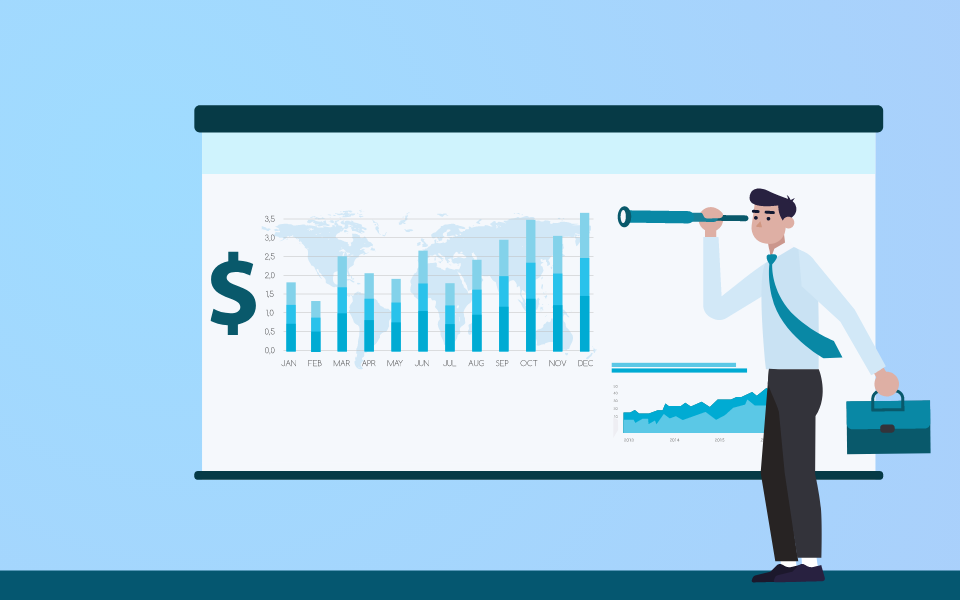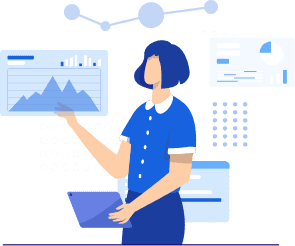Subscribe to Our Newsletter
Stay updated with the latest tips and strategies. Get additional discounts and alerts on offers.

Predicting revenue and staying on course in a dynamic sales environment can be a complex challenge. As businesses grow, making informed decisions about future sales and investments becomes vital.
The uncertainty of market trends, fluctuating customer demands, and ever-evolving competitive landscapes make it hard for businesses to navigate without proper guidance. This is where sales forecasting comes in. It helps businesses make informed predictions based on historical data, market trends, and other key factors.
Sales forecasting enables companies to estimate future revenue, anticipate market shifts, and set realistic goals, ensuring long-term stability. In this blog, we’ll explore what sales forecasting entails, its importance in determining ROI, the top models you can use, and how you can effectively calculate your sales forecast.
Let’s get started!

Sales forecasting is the process of estimating future sales by analyzing historical sales data, market conditions, and other variables. It’s a critical function for businesses of all sizes, as it allows decision-makers to anticipate future performance and make proactive decisions regarding resources, staffing, inventory, and financial planning.
Forecasting sales helps identify potential revenue opportunities and risks, so businesses can adjust their strategies accordingly. It’s a forward-looking process that gives organizations a chance to stay ahead of challenges and seize opportunities, offering a clear direction to achieve growth goals.
For any business, return on investment (ROI) is a key metric. Sales forecasting plays a crucial role in determining ROI by predicting revenue and measuring the effectiveness of investments.
When businesses can anticipate their sales figures, they can allocate their resources more wisely, reducing unnecessary spending and optimizing investment strategies.
Sales forecasts also help to:
Establish accurate budgets and financial plans
Manage inventory levels more efficiently
Set realistic sales targets
Align sales efforts with marketing and product development
Enhance investor and stakeholder confidence
By offering a data-backed projection of revenue, sales forecasting is indispensable in ensuring that businesses maintain positive cash flow and achieve their desired ROI.





This model is useful for businesses with longer sales cycles. It examines how long it takes for a deal to move through the sales process and uses that data to estimate when future sales will close. It helps in planning resources and predicting cash flow.
Each of these models offers a unique perspective on predicting sales, and the right one for your business depends on various factors like your sales process, the size of your sales team, and the complexity of your products. Understanding these models is key, but knowing how to calculate a sales forecast effectively is just as important.
A SaaS company has $50,000 worth of deals in its sales pipeline. Based on the current stage of each deal, the company assigns a 60% probability of closure. Using the pipeline method, the company forecasts $30,000 in revenue for the next quarter.
While the above examples provide a basic understanding of sales forecasting calculations, businesses often rely on a combination of qualitative and quantitative methods to make more accurate predictions.


Choosing the right revenue forecasting software is essential for businesses that want to streamline the forecasting process.
Here are some features to keep in mind when selecting the best tool for your needs:
Accurate sales forecasting is only as good as the data feeding into your models. At DataCaptive, we understand the power of reliable data in predicting future sales. Our B2B email list provides comprehensive, accurate, and updated contact details that can enhance your lead-driven and pipeline forecasting models.
By using our segmented B2B email database, your sales team can target the right decision-makers, ensuring that every lead you generate is high-quality and likely to convert. This precision targeting allows you to build a stronger, more predictable sales pipeline, leading to more accurate forecasts and improved revenue projections.
Moreover, integrating DataCaptive’s data with your CRM and sales tools ensures real-time updates on lead activity and sales performance, giving you the competitive edge you need to stay on top of your sales targets. With DataCaptive, you not only gain access to rich data but also a trusted partner in achieving sales success.
Key Attributes of DataCaptive:
100% human verified contacts
95% data accuracy
Fully consented email addresses
85% email deliverability rate
Tele-verified direct dials
Strictly adherence to data regulation policies (GDPR, CCPA, CAN SPAM, and more)
10+ segmentation options
40+ customizable data attributes
Wide integration capabilities
Delivered in .csv and .xls formats
Affordable pricing plan
Provides FREE sample list upon request
Sales forecasting is an indispensable tool for businesses looking to stay competitive and meet their revenue goals. By understanding and utilizing the right forecasting models, companies can anticipate challenges, allocate resources effectively, and optimize their strategies. Whether you use qualitative or quantitative methods, having accurate data is crucial for reliable forecasts.
With DataCaptive’s B2B email lists, you can elevate your sales forecasting accuracy by ensuring a steady stream of high-quality leads. Equip your business with the right tools and data and take control of your sales future with confidence.
Get a Quote!
Show Some Love!

Subscribe to Our Newsletter
Stay updated with the latest tips and strategies. Get additional discounts and alerts on offers.
Related Articles
Subscribe to Newsletter
Stay up to date with the latest marketing, sales, and service tips and news.
Share your requirements, and we’ll provide a tailored list to maximize your impact with the right contacts!

FILL IN YOUR DETAILS TO REQUEST A CALLBACK
You may also be interested in:
Access accurate personal emails and direct numbers for improved outreach.
